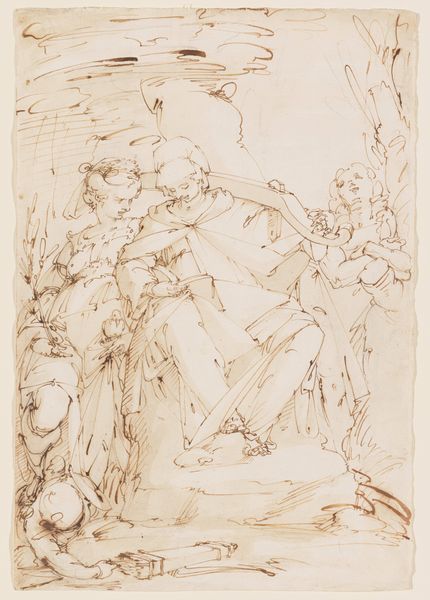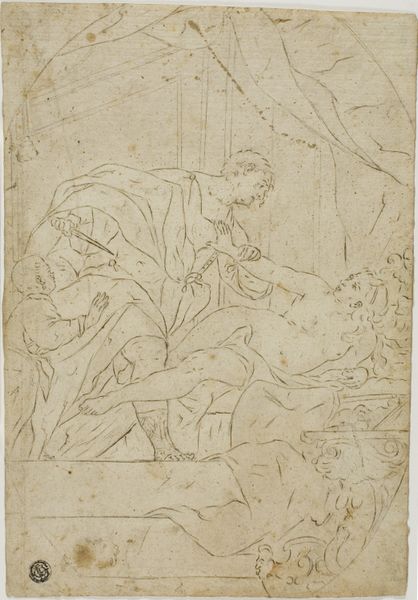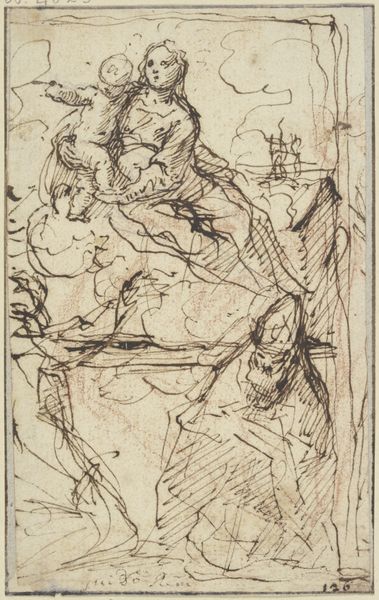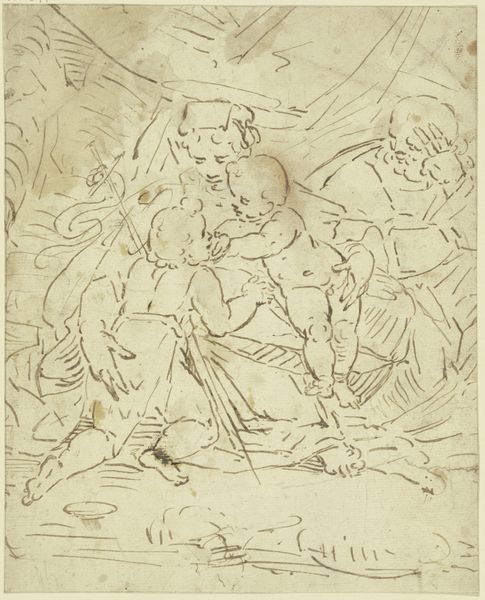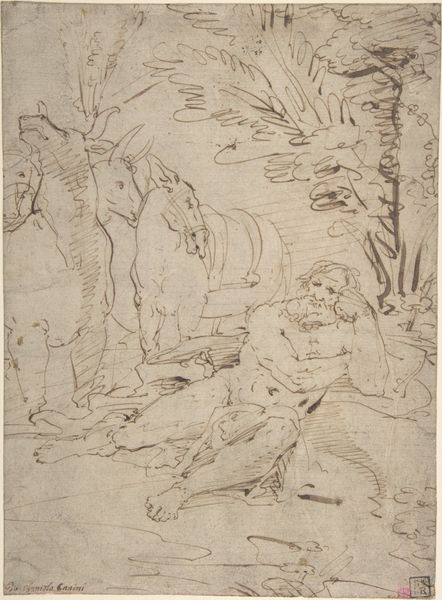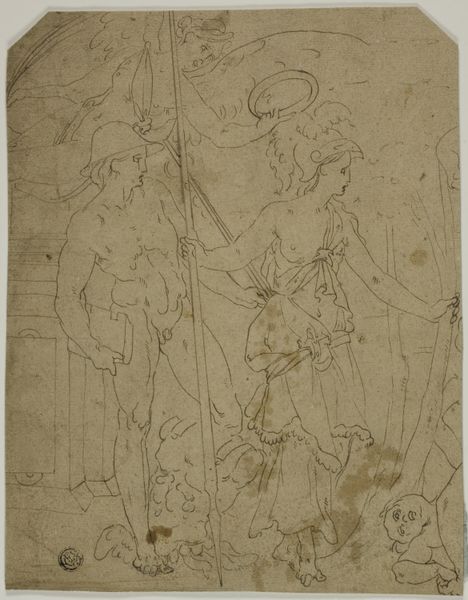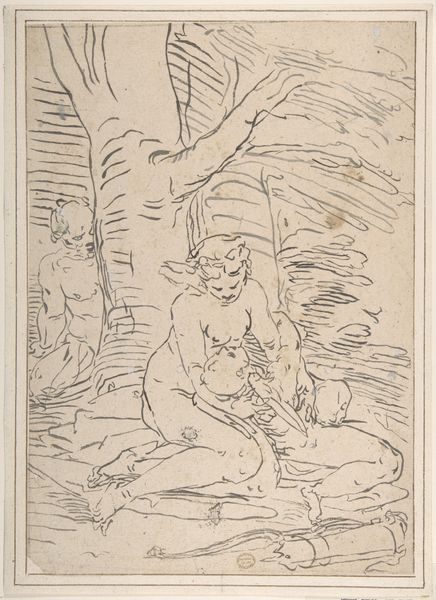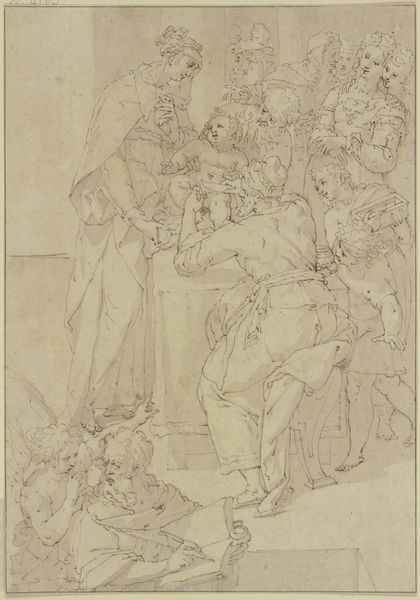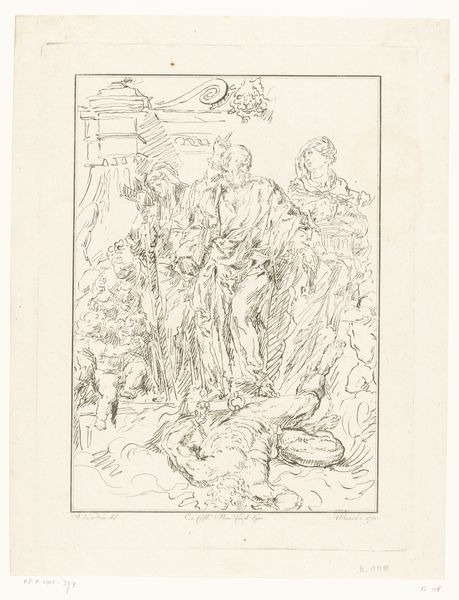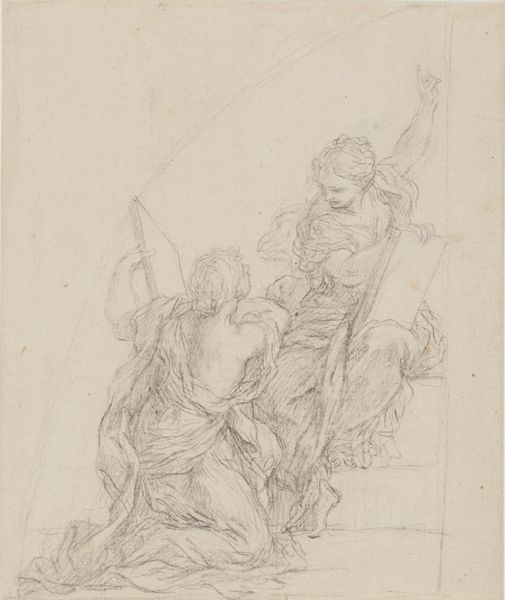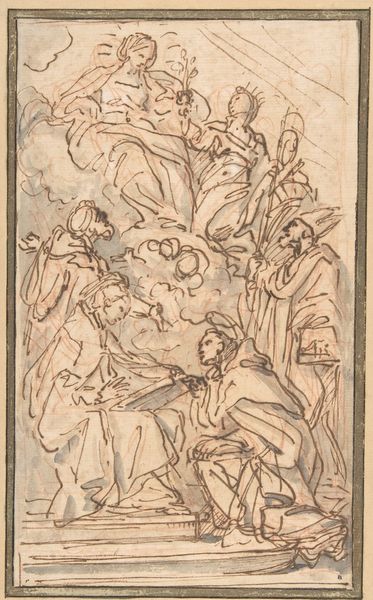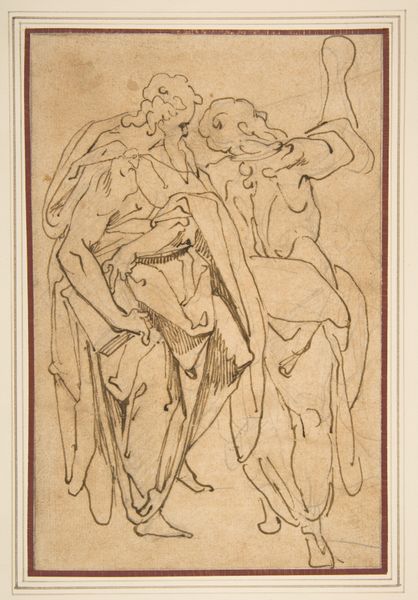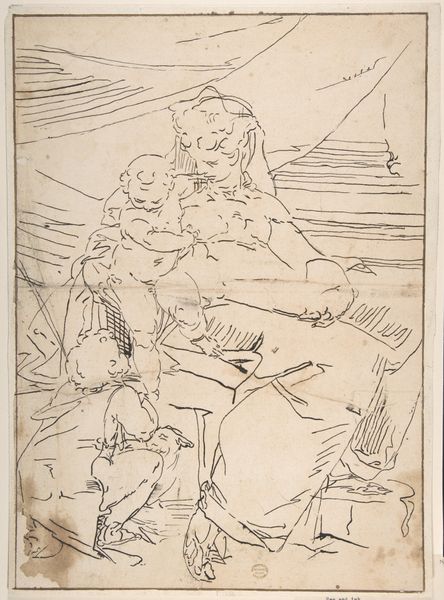
drawing, print, etching, ink
#
portrait
#
drawing
#
ink drawing
#
ink painting
# print
#
etching
#
etching
#
figuration
#
ink
#
group-portraits
#
italian-renaissance
Dimensions: 14 1/4 x 9 3/4in. (36.2 x 24.8cm)
Copyright: Public Domain
Editor: Right, so here we have Luca Cambiaso's "Holy Family", created sometime between 1527 and 1585. It's an etching in ink, which gives it a really delicate, almost unfinished look. The figures seem to be emerging from the background, very dreamlike. What strikes you about its composition? Art Historian: Indeed, the composition invites immediate formal analysis. Notice Cambiaso's use of line: it is economical yet descriptive. See how with minimal strokes he suggests volume and form. The spatial relationships are, shall we say, ambiguously rendered, creating a flattening effect, almost like a tapestry. What do you make of this intentional ambiguity? Editor: I see what you mean! It's not about realistic depth. It's like he's playing with the idea of space. And those figures... they're grouped so closely together, creating a sense of intimacy but also maybe some visual tension. Why do you think he chose etching, of all techniques? Art Historian: Etching, with its capacity for fine lines and tonal gradations, allows for a certain level of expressive detail, whilst retaining reproducibility. Cambiaso would certainly have been aware of that and how such a choice might bring him and his subject matter before a wider audience. But let's return to the internal dynamics: How does the interplay between light and shadow contribute to your experience of the work? Does it create any specific moods or sensations for you? Editor: It's quite subtle, right? Not high contrast. The shading feels more about defining shapes than creating drama, and reinforces the idea of a dream or distant memory rather than reality. Art Historian: Precisely. The network of lines functions structurally, rather than mimetically. This reinforces, to my eye, a deep investment in the picture plane, not just the depiction. What do you make of it? Editor: I had assumed it was about telling a story or evoking some cultural memory. I can now appreciate his choices about line and shading which are so interesting. I will certainly need to reflect further upon the work. Thanks so much for sharing your perspectives!
Comments
No comments
Be the first to comment and join the conversation on the ultimate creative platform.
